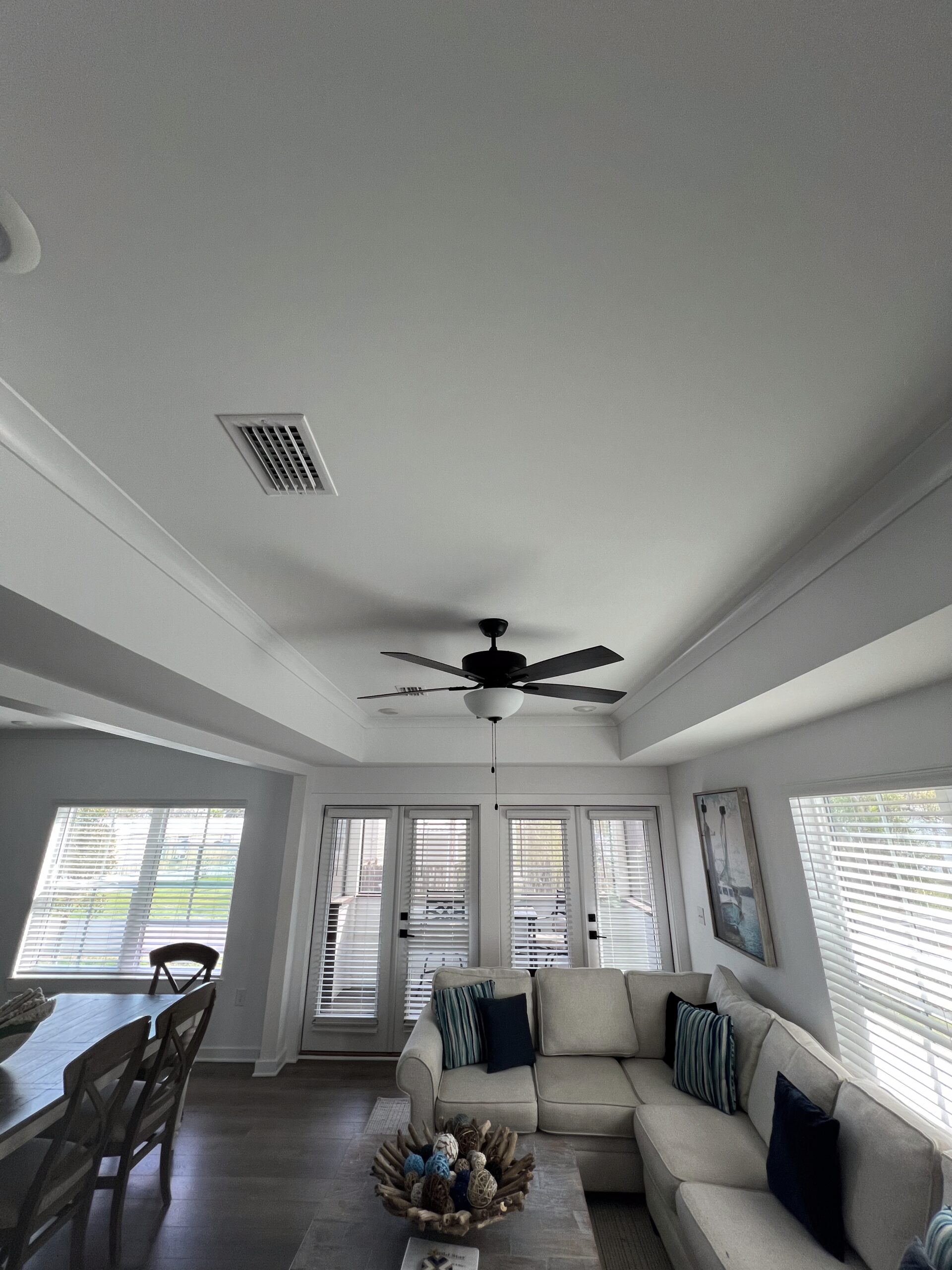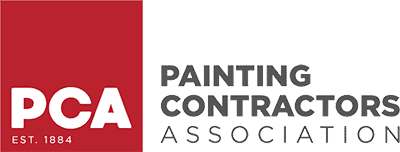Homeowners, property managers, and even DIY enthusiasts want a finish that not only looks great on day one but also lasts for years. The immediate answer? Spray painting generally delivers a smoother, more uniform finish, while roll painting can leave a slight texture that works well on certain surfaces.
The truth is, both methods can produce professional-quality results if done correctly. The key lies in surface prep, paint choice, and application technique. What looks great in a new living room may not work as well in a textured hallway or a busy kitchen.
This blog takes a deep dive into the finish quality, coverage efficiency, durability, cost, and practical concerns of spraying vs. rolling. You’ll also find service-specific recommendations, product guides, and real-world examples to help you make the right decision for your next project.
Understanding the Differences Between Spray and Roll Painting
Spray Painting Basics
Spray painting uses airless sprayers or HVLP sprayers (high-volume low-pressure). Instead of applying paint through contact, paint is atomized into fine particles that settle evenly onto a surface.
It’s often the go-to method for professional painters when handling:
-
Large, flat walls
-
Ceilings
-
Trim, doors, and cabinets
Advantages:
Spraying is fast—capable of covering hundreds of square feet in under an hour. It produces a consistent, factory-like finish that eliminates brush or roller marks. It also gets into tight corners, grooves, and edges without extra effort.
Disadvantages:
Spray painting is prep-intensive. Everything in the room—floors, windows, fixtures—must be masked or covered to avoid overspray. Equipment is also more expensive to rent or purchase, and using it well requires skill and practice.
Roll Painting Basics
Roll painting is the most common technique for painting walls in homes. Using a roller with the right nap length for the wall texture, painters apply paint in controlled strokes. Edges and corners are typically cut in with brushes.
Advantages:
Rolling offers excellent control with minimal mess. It’s also inexpensive—rollers, trays, and brushes cost a fraction of a sprayer. Beginners find rolling easier because mistakes are easier to fix.
Disadvantages:
Rolling is slower, especially for large spaces. Depending on the roller and technique, slight roller marks may remain, and multiple coats may be needed for a uniform look.
Surface Suitability and Prep Requirements
Not every surface is suited for spraying or rolling. Choosing the wrong method can waste time and money, or worse, leave you with a finish you regret.
Surfaces Best for Spraying
Spraying works best on smooth, uninterrupted surfaces where a flawless finish is desired. Think:
-
Living room walls with a flat or eggshell finish
-
Smooth ceilings
-
Cabinets, doors, and trim work
-
Exterior siding where speed is critical
Premium paints with thicker pigments tend to atomize beautifully, creating an even coat with fewer passes.
Surfaces Best for Roll Painting
Rolling excels in rooms where overspray could be a problem. It’s also ideal for walls that already have texture (knockdown, orange peel, popcorn).
-
Drywall and textured walls
-
Small bedrooms, bathrooms, or hallways
-
Spaces where furniture is hard to move
-
Projects where a slight texture is desired to hide imperfections
Budget paints, which may require multiple coats for coverage, are often better suited for roll painting since waste is minimized compared to spraying.
Recommended Prep Products
Prep is non-negotiable if you want your paint to last. Professionals know that 90% of a great finish is prep. Here’s a quick product guide:
| Prep Step | Recommended Products | Why It Matters |
|---|---|---|
| Priming | Zinsser Cover-Stain, Sherwin-Williams Multi-Purpose Primer | Improves adhesion, blocks stains |
| Caulking | Sashco Big Stretch, SherMax Elastomeric | Seals gaps, flexible finish that resists cracks |
| Sanding | Festool Orbital Sander, Makita Orbital Sander | Smooths walls for uniform paint application |
| Masking | 3M Painter’s Tape, Drop Cloths, Poly Sheeting | Protects floors, windows, and fixtures |
Failing to prep properly often leads to premature peeling, bubbling, or uneven coverage, regardless of whether you spray or roll.
Finish Quality: Smoothness, Uniformity, and Texture
The look and feel of the finish is where spray and roll painting differ the most.
Spray Application Finish
Spray painting produces an ultra-smooth, professional-grade finish. It eliminates roller marks and brush strokes entirely, which is why it’s preferred for cabinets, doors, and trim.
It’s also excellent with high-gloss and semi-gloss paints, which are notorious for showing imperfections when applied incorrectly.
However, spraying requires experience and precision. A sprayer held too close may cause runs; too far away may result in uneven coverage.
Roller Application Finish
Roll painting leaves a slight texture, often called “stippling.” On smooth walls, this can be noticeable under certain light conditions. On textured walls, however, the roller blends into the existing surface beautifully.
Rolling is a controlled, deliberate process that allows painters to work around obstacles and get even coverage without rushing. The tradeoff is time—achieving a smooth look may require two or three coats.
Service-Specific Examples
-
Cabinet Refinishing: A sprayed finish delivered a factory-smooth look in just 2 coats. Attempting the same with rollers required sanding between coats and still left visible texture.
-
Interior Living Room Walls: Rolled application took 3 coats to achieve full coverage. While the texture was minor, it remained visible under certain lighting.
For homeowners aiming at painting walls for resale or high-end interiors, spraying often provides the polish buyers expect.
Longevity and Durability of the Finish
A beautiful finish doesn’t matter if it starts peeling or fading after a year. Longevity depends on prep, paint quality, and application technique.
Factors Affecting Finish Longevity
-
Surface Prep: Cleaning, sanding, and priming ensures proper adhesion.
-
Paint Quality: Premium paints resist stains, fading, and scuffs longer.
-
Number of Coats: Too thin, and coverage suffers; too thick, and peeling becomes a risk.
Spray vs. Roll Durability Insights
Both spraying and roll painting can last 10+ years if done right. The difference lies in how paint is layered:
-
Spray: Creates thin, even layers that reduce cracking or peeling. Great for smooth walls.
-
Roll: Applies slightly thicker coats, which may help on textured walls but can require more frequent touch-ups.
Product-Specific Longevity Tips
-
Exterior Walls: Use durable acrylics like Sherwin-Williams Duration or Benjamin Moore Aura. Both hold up against UV rays and rain.
-
Interior Smooth Walls: High-solids paints like Benjamin Moore Regal Select sprayed onto walls retain sheen longer.
-
Cabinets & Trim: Enamels like Sherwin-Williams Emerald Urethane sprayed deliver a hard, washable surface.
Efficiency and Coverage: Labor, Time, and Materials
Time is money, especially when hiring professionals. Efficiency differs significantly between spraying and roll painting.
Spray Painting Efficiency
Sprayers can cover 400–500 sq. ft. per hour. On large projects, this can save days of labor. But remember—prep and masking may take just as long as the painting itself.
Spraying is ideal when speed matters, such as for commercial spaces, new builds, or large exteriors.
Roller Painting Efficiency
Roll painting averages 150–250 sq. ft. per hour. Slower, yes, but with less prep time and less paint waste. DIYers often prefer this method because it feels less intimidating and requires minimal cleanup.
Coverage Comparison Table
| Factor | Spray Painting | Rolling |
|---|---|---|
| Labor Time | Faster for large surfaces | Slower |
| Prep & Masking | Extensive | Minimal |
| Equipment Cost | High (sprayer rental/purchase) | Low |
| Paint Waste | Higher (overspray) | Lower |
| Finish Quality | Ultra-smooth | Slight texture |
Common Concerns and Solutions
Overspray and Mess
Spray painting can leave fine mist on everything in the room. That’s why pros use drop cloths, poly sheeting, and painter’s tape religiously. Roll painting has minimal mess, making it the safer choice for occupied homes.
Skill Requirements
Spray painting requires a steady hand and experience. Professionals spend time adjusting spray tips, pressure, and angles. Roll painting is easier to learn, though proper technique—keeping a wet edge, overlapping strokes—still matters.
Touch-Ups and Maintenance
-
Spray Finish: Harder to patch; blending new paint into the old can be noticeable.
-
Roll Finish: Easier for homeowners to touch up small nicks or scuffs without repainting the whole wall.
People Also Ask
Q: Does spray painting produce a better finish than rolling?
Generally, yes. Spraying provides a flawless look on smooth, large surfaces. Roll painting works well for textured or smaller areas.
Q: Which method lasts longer, spray or roll?
Both last equally long if premium paint, proper prep, and correct technique are used.
Q: Is spraying more expensive than rolling?
Yes, equipment and prep costs are higher. But on large projects, spraying saves labor costs.
Q: Can premium paint be applied with a roller?
Absolutely. Premium paint works well with rollers but may need more coats to achieve the same smoothness.
Q: Is spray painting suitable for DIY projects?
It can be, but only with proper masking and patience. Roll painting remains the easier option for beginners.
Choosing the Right Method for Your Project
So, which method should you choose for painting walls?
-
Spray Painting: Perfect for large, smooth surfaces or when you want a high-end, factory-quality finish. Best left to professionals or advanced DIYers.
-
Roll Painting: Ideal for textured walls, small rooms, and budget-friendly projects. Great for beginners and easy to touch up over time.
Both methods can deliver durable, beautiful results if paired with premium paints, proper prep, and patience.
Before starting your project, ask yourself: How large is the surface? How smooth do I want the finish? What’s my budget, and how much time can I commit?
Answering these will point you to the right method—and ensure that your freshly painted walls look stunning for years.










